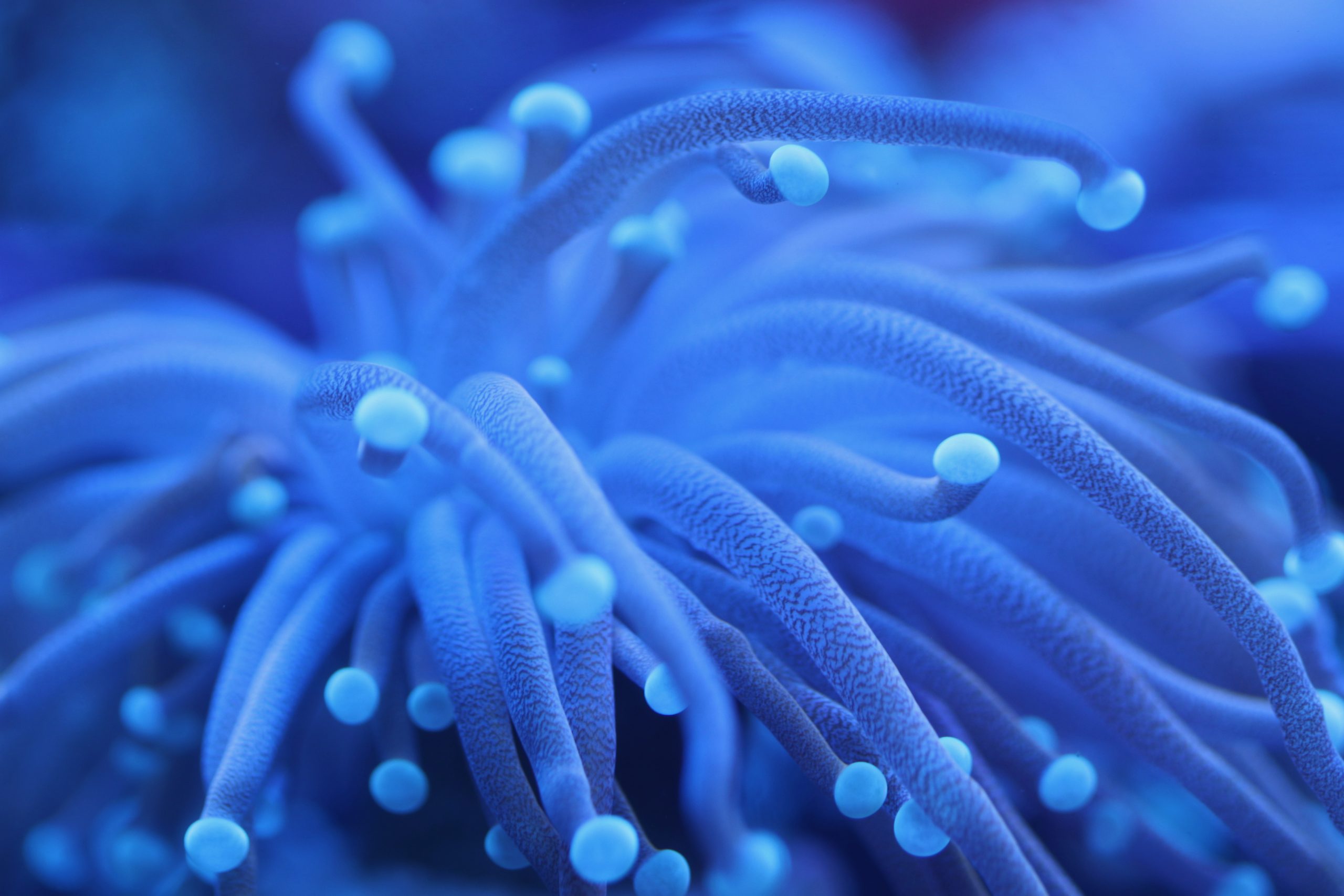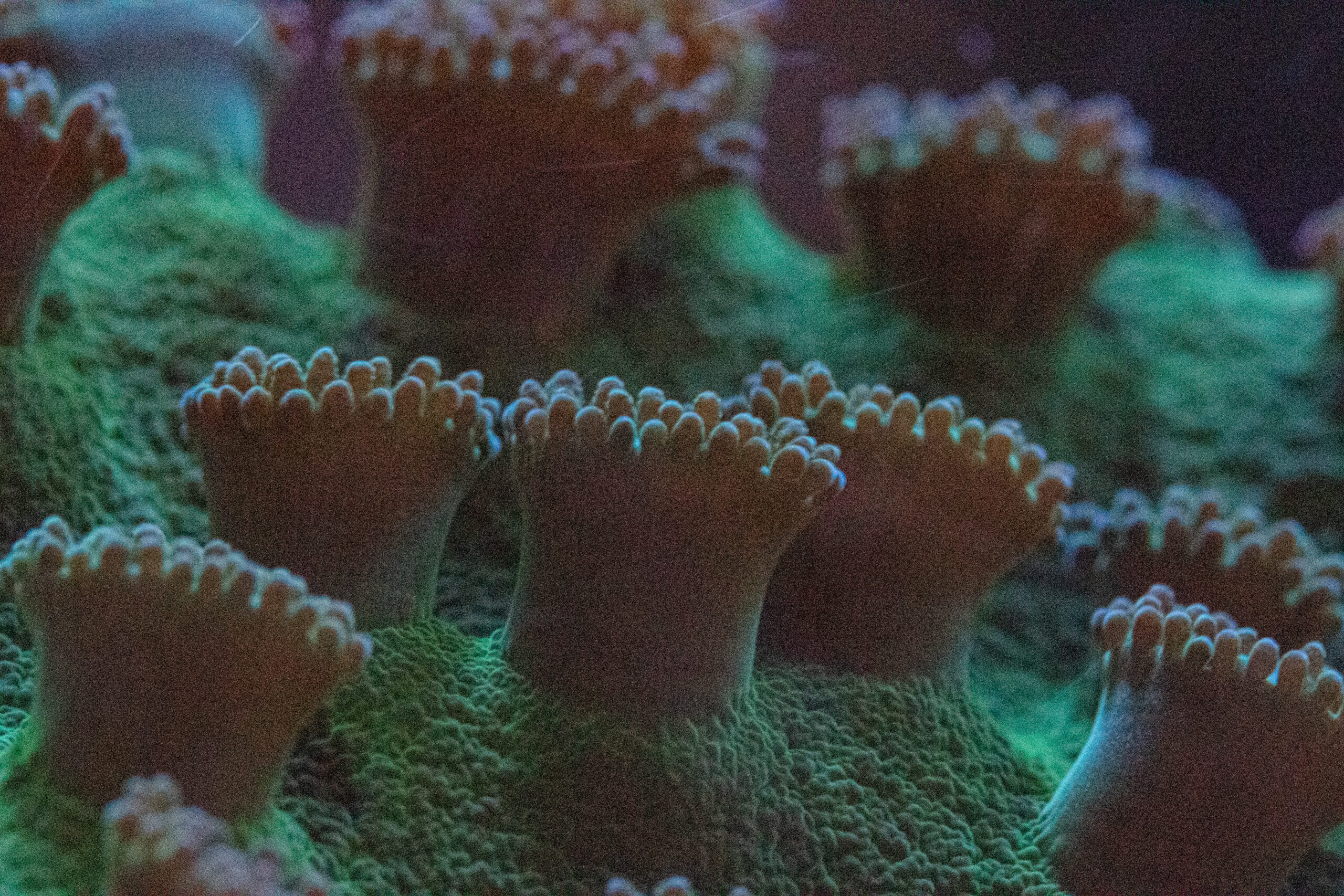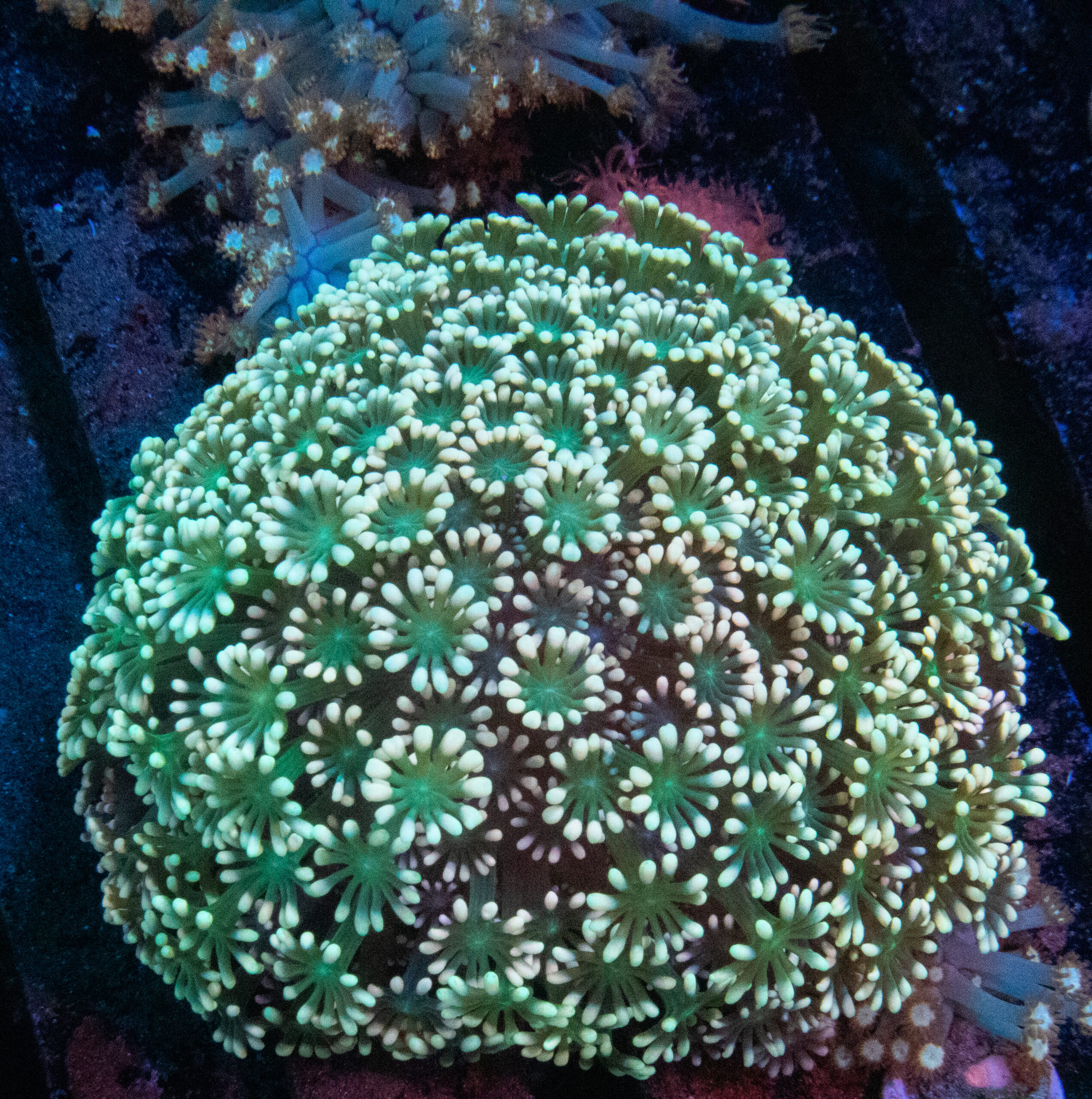
Zooxathellae; The Life-Blood of Coral.
Most reef-building corals have a symbiotic relationship with photosynthetic cells called zooxanthellae, which reside within the coral’s tissues. In this mutualistic relationship, the coral provides the zooxanthellae with a protected environment and necessary compounds for photosynthesis, while the zooxanthellae produce oxygen and assist in the removal of waste materials. Additionally, the zooxanthellae supply the Coral with glucose, glycerol, and amino acids produced through Photosynthesis, which the Coral uses to create Proteins, fats, and carbohydrates, as well as calcium carbonate. This tight nutrient recycling between the zooxanthellae and coral polyps is a significant factor in the growth and productivity of coral reefs, with as much as 90 percent of the organic material produced by the zooxanthellae being transferred to the host coral tissue.
Furthermore, zooxanthellae are responsible for the vibrant and distinct colors found in many stony corals. If a coral becomes stressed, the polyps can expel their zooxanthellae, resulting in a bleached appearance. If this condition persists for too long, it can lead to the coral’s demise.
Due to the coral’s reliance on the photosynthetic abilities of zooxanthellae, reef-building corals behave like plants and require clear water to allow sunlight to reach the zooxanthellae for photosynthesis. Therefore, they are typically found in areas with low turbidity and productivity. This creates a paradox, as coral reefs require nutrient-poor water, yet are among the most productive and diverse marine environments.

What is a Coral Protien?
Coral protein refers to proteins that are found in the skeletal structure of coral reefs. These proteins play a crucial role in the formation of coral reefs, as they help to create the calcium carbonate structure that makes up the reef.
Coral reefs are built by tiny animals called coral polyps, which secrete a hard, calcium carbonate exoskeleton. The exoskeleton is made up of numerous layers of calcium carbonate crystals, which are laid down by the coral polyps over time.
The proteins in the coral exoskeleton play an important role in the formation and maintenance of the calcium carbonate structure. These proteins help to regulate the formation and growth of the calcium carbonate crystals, ensuring that the coral skeleton grows strong and resilient.
In recent years, scientists have become increasingly interested in the potential uses of coral proteins in a variety of applications, including biotechnology, materials science, and medicine. Research has shown that coral proteins possess a range of unique properties that make them potentially valuable in these fields, including high biocompatibility, structural stability, and the ability to form self-assembling structures.

Coral Proteins Reaction(s) to Light
Coral proteins can exhibit different reactions to light depending on the specific type of protein and the wavelength of the light. For example, some coral proteins called fluorescent proteins can absorb light and then emit it at a different wavelength, producing a glowing effect. This fluorescence is useful for scientists to study the movement and behavior of proteins within living cells.
Additionally, some coral proteins can be sensitive to different wavelengths of light and may undergo structural changes or chemical reactions in response to light. For instance, one study found that a protein found in the coral Acropora millepora changes its structure when exposed to blue light, leading to an increase in its ability to bind calcium ions. This calcium binding can help regulate the growth and formation of coral skeletons.
Overall, the way coral proteins react to light can have important implications for coral growth, as well as for the development of new technologies and biomedical applications that harness the unique properties of these proteins.
Coral Protein Relationship to Coloration
Coral coloration is influenced by the presence of pigments in the coral tissue, as well as by the way that light interacts with the coral skeleton. The color of coral can also be affected by the presence of fluorescent proteins that are produced by the coral’s tissues.
Some of these fluorescent proteins, such as green fluorescent protein (GFP), can emit light at specific wavelengths when exposed to ultraviolet light. These proteins can give corals a range of colors, including green, yellow, red, and purple.
Additionally, the structure of the coral skeleton can also contribute to its coloration. The interaction between light and the calcium carbonate crystals in the skeleton can cause light to be refracted or scattered in different ways, resulting in a range of colors and patterns.
Coral proteins play a critical role in the formation and maintenance of the coral skeleton, including its coloration. Some of the proteins involved in this process, such as the fluorescent proteins mentioned above, can contribute to the coloration of the coral tissue. Other proteins are involved in regulating the growth and structure of the skeleton, which can affect the way that light interacts with the coral and the resulting coloration.

Can Coral Proteins Fight?
Coral proteins are not capable of actively fighting in the sense of engaging in physical combat or aggression, as they are non-motile and lack the ability to move on their own. However, coral proteins do play an important role in the coral’s ability to defend itself against various stressors and threats.
For example, when corals are exposed to high temperatures, pollution, or other environmental stressors, they may produce stress proteins called heat shock proteins. These proteins help the coral to survive by repairing damaged proteins and preventing the accumulation of harmful molecules in the cells.
Coral proteins can also play a role in defending the coral against disease-causing organisms, such as bacteria or viruses. Some coral proteins have antimicrobial properties that allow them to kill or inhibit the growth of these harmful microorganisms, while others may help to activate the coral’s immune system and promote the production of protective molecules.
Overall, while coral proteins are not capable of fighting in the traditional sense, they play a critical role in helping corals to defend themselves against a variety of stressors and threats. By producing specialized proteins, corals are able to adapt to changing conditions and maintain their health and survival in a challenging and dynamic marine environment.
Are Coral Proteins like Muscles?
Coral proteins are not exactly like miniature muscles for corals, although they do play a similar structural role in the formation of the coral skeleton. While muscles are composed of long, thin fibers that can contract and relax to produce movement, coral proteins are more like building blocks that help to construct and maintain the coral’s skeletal structure.
The coral skeleton is made up of calcium carbonate crystals that are laid down by the coral polyps, which are tiny animals that live within the coral colony. The polyps secrete a variety of proteins and other organic compounds that help to regulate the formation and growth of the calcium carbonate crystals, ensuring that the skeleton grows strong and resilient over time.
Some of these coral proteins are involved in the initial nucleation and growth of the calcium carbonate crystals, while others are involved in the ongoing maintenance and repair of the skeleton. For example, some coral proteins have been shown to bind to calcium ions and help to regulate the mineralization process, while others are involved in the removal of damaged or weakened parts of the skeleton.
Overall, while coral proteins do not function exactly like miniature muscles, they do play a critical role in the formation and maintenance of the coral skeleton, which provides the structural support and protection necessary for coral survival in the marine environment.


